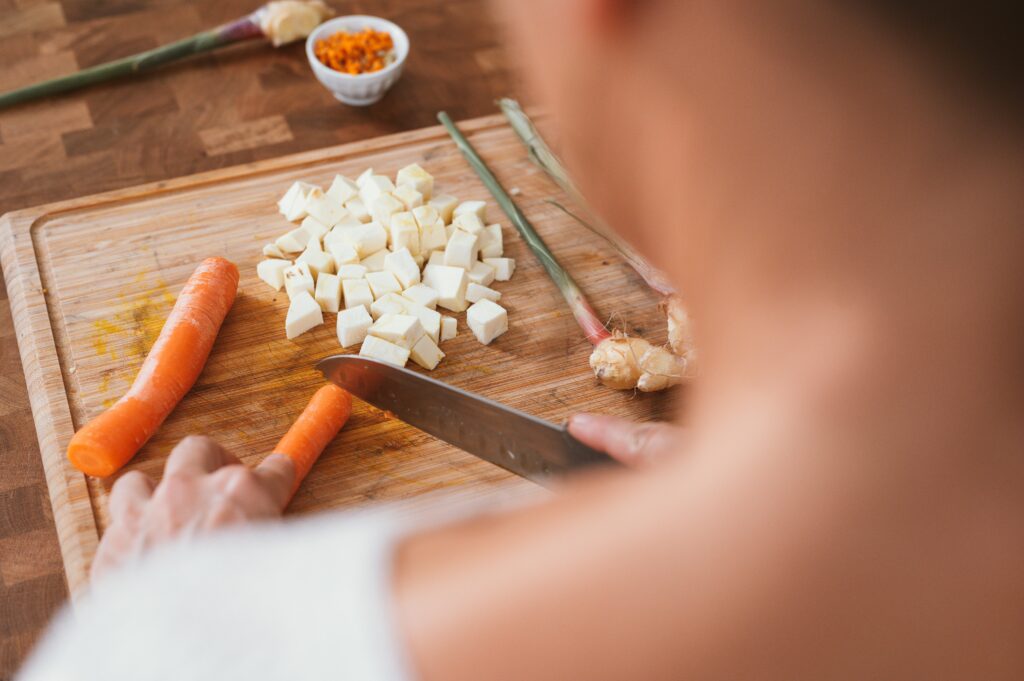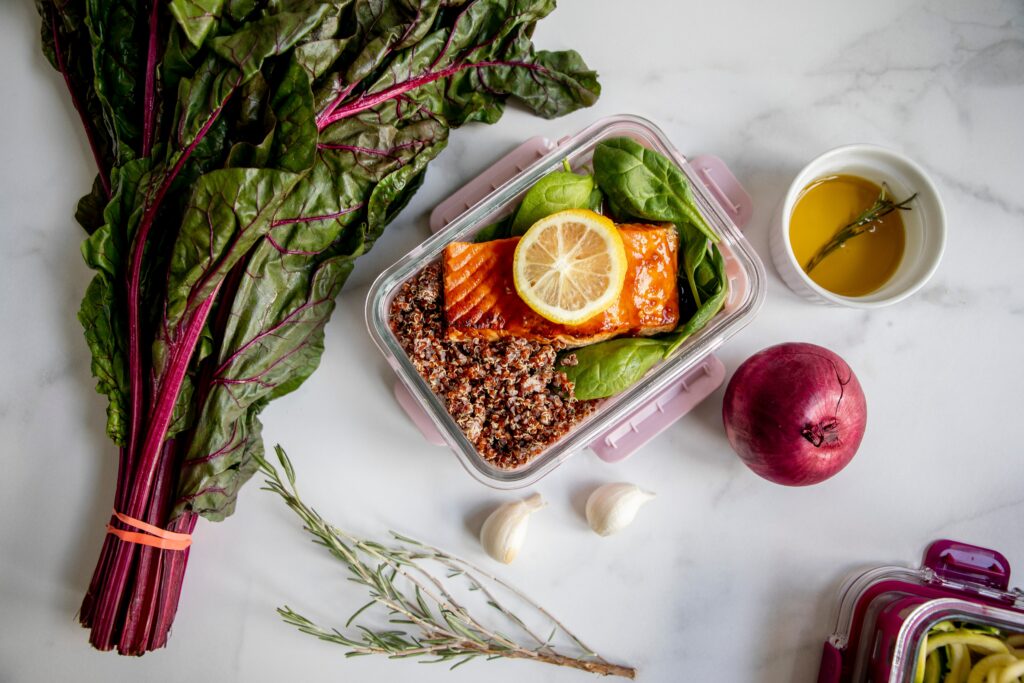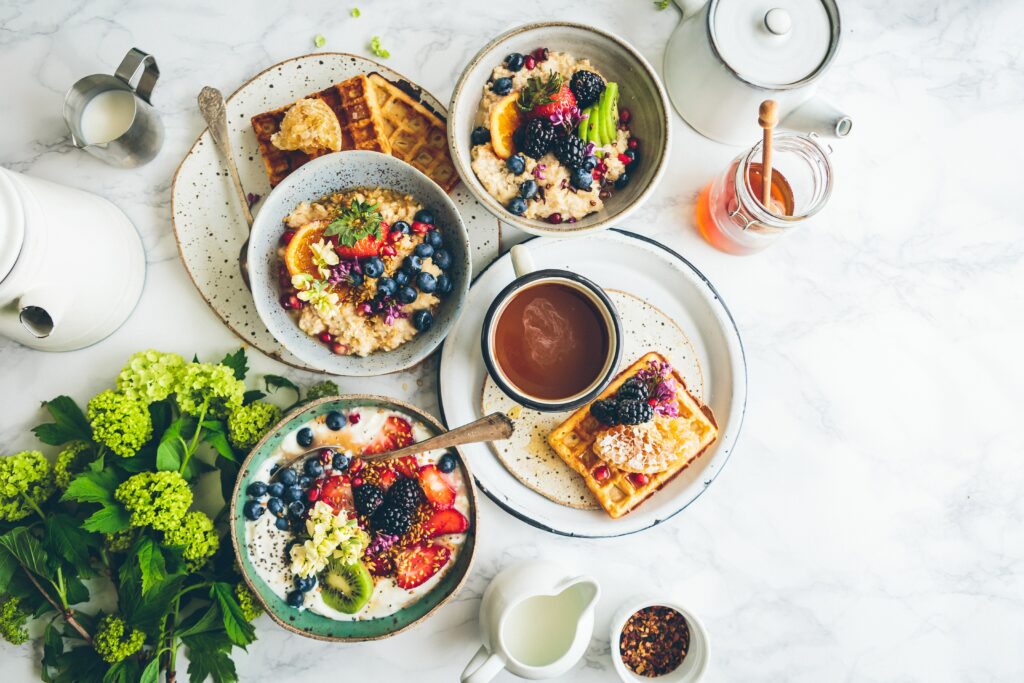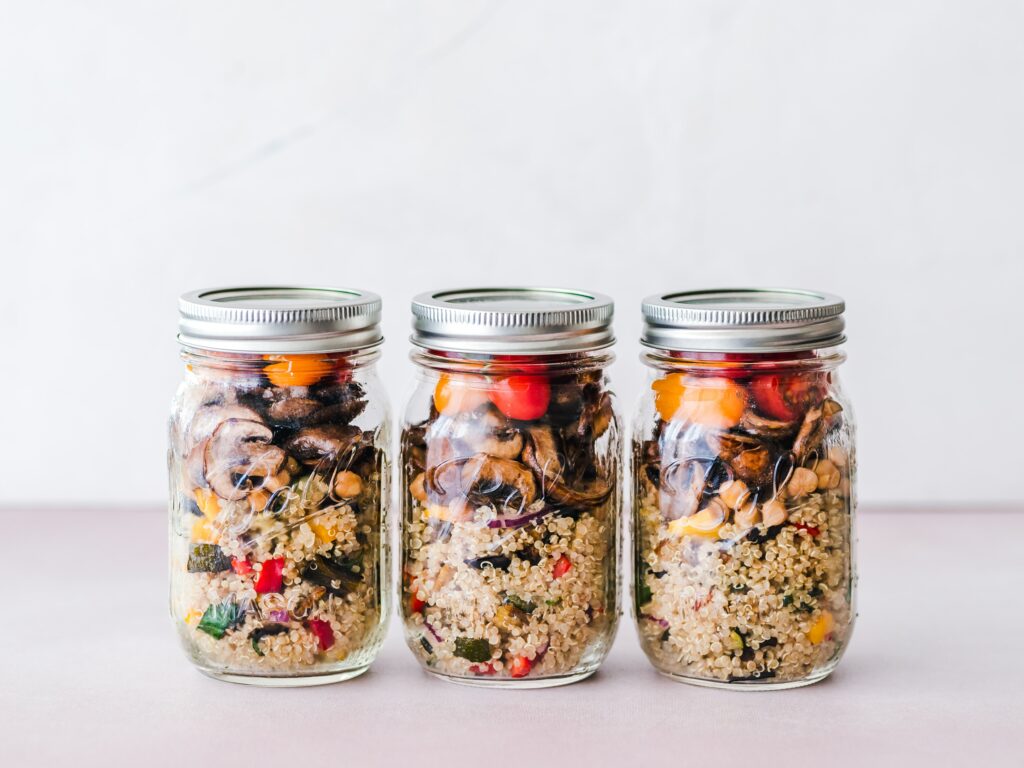I’m all about efficient meal prep. After all, life is full. When I’m not at my keyboard, I’d rather be moving my body, playing with my toddler, or spending time in nature. And while food is fuel, it’s also a source of creativity and fun. When it comes to building healthy meals for my family, I focus on a combination of three things: gentle nutrition, what’s in season, and of course, honoring cravings. In our house, variety is the spice of life. I aim to include many different ingredients and flavors, and we always have delicious snacks and desserts on hand. While keeping my family nourished is a small labor of love, it brings me joy. If you’re ready to add more nutrients to your meals—and do it efficiently!—this is your guide. You’ll learn how to make healthy meals with a busy schedule. I’ve got just the formula for you.

meal prep feel daunting? try this instead
Consider the slight alternative: ingredient prepping. Ingredient prepping is one of my favorite hacks. It saves time in the kitchen and feels more approachable than prepping full recipes. It’s not exactly like meal prepping—which is cooking entire main dishes and sides—it’s just prepping the components. Like, chopping vegetables, marinating proteins, putting together smoothie baggies, and cooking grains.
Why ingredient Prepping saves time
First, it’s easier than full-scale meal prepping. No need to set aside 1-2 hours to prep full meals.
Second, it makes lunch and dinnertime prep faster and easier. In other words, batch chopping vegetables is much more efficient than the cumulative time it takes to chop things before every meal. It’s like, mise en place.
Third, you’ll likely make healthier meal choices. When it comes to how to make healthy meals with a busy schedule, look no further than ingredient prepping. If you have ingredients prepped ahead of time—chopped bell pepper, hard boiled eggs, simple chia pudding, etc.—you’re more likely to choose satiating, nourishing foods.
Fourth, it reduces food waste. I’m all about ensuring your food doesn’t spoil. Think of it this way: if the ingredient is prepped, you’re more likely to use it. Thus, you’re less likely to waste it.

How To Build A healthy Meal in 6 steps
Here’s my simple guide to building balanced and delicious meals. The key is to fill your bowls, plates, or tupperware with both macro and micro-nutrients. When you fill your meals with starchy carbs (whole grains, squashes, fruits, etc.), greens, protein, and healthy fats, you’ll notice improved sleep, a better mood, more energy, and happy hormones. To enjoy a variety of flavor, texture, and nutrition, choose at least one ingredient from each category below. You may notice you require more of a certain category to stay full for 3-4 hours. Experimentation is key. We are all different! Here’s my go-to formula:
START WITH A BASE OF GREENS
These can be cooked or raw. If you tend to notice bloating after eating raw veggies, try cooking most of your produce instead. Options include: spinach, arugula, romain lettuce, kale, Swiss chard, Mustard greens, and bok choy. Consider at least 2-3 cups of greens.
ADD non-starchy veggies
These can be raw, roasted, steamed, sautéed, or grilled. Opt for a combination of cooking style and the types of produce! Otherwise, keep it simple. For example, sauté shredded cabbage. Produce to include: carrots, peppers, beets, roasted eggplant, asparagus, Brussels sprouts, broccoli, cauliflower, green beans, mushrooms, zucchini, tomatoes, shredded cabbage, and onion. Add as many non-starchy veggies as you’d like!
Throw in A GRAIN OR STARCH
Starchy carbs are crucial for satiation and hormone health. Especially for women (which is why I don’t recommend keto!). Examples include quinoa, brown rice, wild rice, farro, butternut squash, sweet potatoes, soba (buckwheat) noodles, 100% whole wheat pasta, and fruit. In terms of portion size, this will vary. For most, 1/2-1 cup of a grain or starch works well.
Top with PROTEIN
The sky’s the limit. If you’re plant-based, opt for chickpeas, black beans, lentils, veggie burgers, edamame, or tempeh. Otherwise, wild-caught salmon (canned or grilled), chicken, deli turkey, shrimp, steak, or hard-boiled eggs are great options. With beans and legumes, anywhere from 1/2-1 cup is typically satisfying. For animal protein, roughly a palm’s size (or more!) is a good baseline.
DON’T FORGET HEALTHY FATS
Healthy fats are crucial for balancing blood sugar, helping with the absorption of fat-soluble vitamins, satiation, and flavor! Examples include nuts, seeds, avocado, olives, organic cheese (goat, parm, feta, cottage cheese, etc.), tahini, pesto, and olive oil. Portion sizes will vary, but typically 2-3 tablespoons of healthy fats is essential for satiation.
extra nutritional boosts
For flavor, texture, and other nutrients, consider adding hummus, salsa, tamari, coconut aminos, fresh herbs, nutritional yeast, and more.

Batch cook by ingredient
With that formula in mind, now it’s time to get organized. Again, it’s not about prepping entire recipes (unless that calls to you, of course). Rather, prep ingredients. From the categories above, choose what sounds good, what’s economical, and head to the store. Once you’re home, consider batch cooking. When you batch cook by ingredient, you can stretch that ingredient to work for a few recipes. The key is to choose recipes with similar base ingredients, like roasted or raw vegetables, chicken, etc. Having them ready in advance makes formula-building a breeze. But beyond the formula above, you can use prepped ingredients for soups, put them into salads, add them to stir-fries, or use them as snacks.

Images courtesy of Unsplash. This post contains affiliate links. Thank you for supporting Wellness with Edie! This article is for informational purposes only. It is not, nor is it intended to be, a substitute for professional medical advice, diagnosis, or treatment and we recommend that you always consult with your healthcare provider.



Leave a Reply